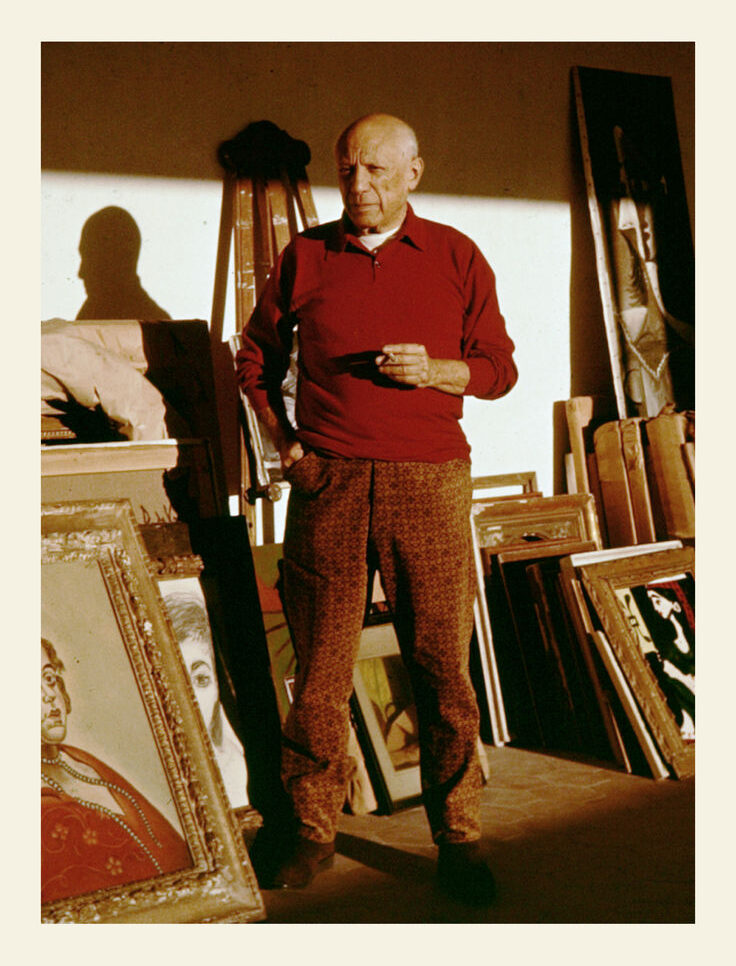Pablo Picasso: A Revolutionary Artist
Pablo Picasso (1881–1973) is celebrated as one of the most iconic and influential artists in history. His groundbreaking contributions to modern art have left an indelible mark, reshaping the way the world perceives creativity. Known as the co-founder of Cubism and a master of countless styles, Picasso’s legacy transcends generations.
Early Life and Background
Pablo Diego José Francisco de Paula Juan Nepomuceno Crispín Crispiniano María Remedios de la Santísima Trinidad Ruiz Picasso was born on October 25, 1881, in Málaga, Spain. He was the first child of Don José Ruiz Blasco, an art teacher, and María Picasso López.
Picasso’s prodigious talent was evident from an early age. At just seven years old, he began painting under his father’s guidance. By the time he was 13, Picasso surpassed his father’s skill, leading Don José to give up painting altogether.
Career and Artistic Evolution
Picasso’s career is often divided into distinct periods that reflect his evolving artistic vision:
- Blue Period (1901–1904)
Marked by somber tones and themes of poverty, loneliness, and despair, this period features works like The Old Guitarist. - Rose Period (1904–1906)
A shift to warmer colors and more optimistic themes, influenced by Picasso’s love for circus performers and acrobats. - Cubism (1907–1914)
Alongside Georges Braque, Picasso pioneered Cubism, a revolutionary style that fragmented objects into geometric shapes. Les Demoiselles d’Avignon remains a defining work of this period. - Neoclassicism and Surrealism (1917–1930s)
Picasso embraced classical forms and surrealist elements, reflecting versatility and a continued drive for innovation. - Later Years and Political Art
Picasso’s later works included powerful political statements, such as Guernica (1937), which condemned the horrors of war during the Spanish Civil War.
Daily Life and Impacts
Picasso was a dynamic and prolific artist, producing over 50,000 works, including paintings, sculptures, ceramics, drawings, and prints. His daily life revolved around relentless creativity, often painting from morning to night. Known for his bohemian lifestyle, Picasso was a charismatic figure, deeply immersed in relationships, friendships, and the cultural movements of his time.
His art has had profound impacts on the world:
- Modern Art Revolution: Picasso’s innovations reshaped artistic conventions, opening the door for abstract and conceptual art.
- Cultural Influence: His work influenced fashion, design, and popular culture, making him a symbol of modernism.
- Art Market: Picasso remains one of the most sought-after artists, with his paintings commanding record-breaking prices.
Fascinating Facts About Pablo Picasso
- A First Word of Inspiration: Picasso’s first word was “pencil” (piz in Spanish), a sign of his lifelong connection to art.
- A Name Like No Other: His full name contains 23 words, honoring saints and relatives.
- Prodigious Output: Picasso created an estimated 147,800 artworks during his lifetime.
- Political Activism: He joined the Communist Party and used his art to express political dissent, notably in Guernica.
- Unmatched Legacy: Picasso’s influence extends beyond art, inspiring generations of creators in various fields.
- Lifelong Experimentation: From Cubism to ceramics, Picasso never stopped experimenting with new styles and mediums.
- Global Recognition: In 1998, the UNESCO Picasso Medal was established to honor contributions to art and culture.
Significance of Pablo Picasso’s Work
Picasso’s contributions to art go beyond aesthetics. His works challenge perceptions, provoke thought, and encourage self-expression. Here’s why his legacy matters:
- Artistic Innovation: Picasso’s ability to redefine artistic norms inspires creativity and boldness in other disciplines.
- Cultural Bridge: His works reflect the complexities of human emotions, making them universally relatable.
- Advocacy Through Art: Picasso used his art to address societal issues, proving the power of creativity in enacting change.
FAQs About Pablo Picasso
1. Why is Picasso so famous?
Picasso is renowned for his versatility, innovation, and the sheer volume of his work, which revolutionized modern art.
2. What is Picasso’s most famous painting?
Guernica is often considered his most iconic work, symbolizing the horrors of war.
3. Did Picasso only paint?
No, Picasso was a multidisciplinary artist, excelling in sculpture, ceramics, drawing, and even poetry.
4. How did Picasso influence other artists?
His bold approach to form, color, and composition inspired movements like Abstract Expressionism and Surrealism.
5. Where can I see Picasso’s works?
Major museums like the Musée Picasso in Paris and the Museum of Modern Art in New York showcase his masterpieces.
Pablo Picasso’s Importance to Society
Picasso’s art transcends time, speaking to universal truths about the human experience. His fearless experimentation encourages individuals to embrace creativity and push boundaries in their own lives. His political works remind us of art’s power to provoke change and foster dialogue.
Wishing for a Creative Future
As we celebrate Picasso’s extraordinary legacy, let us draw inspiration from his life and work. His boldness, innovation, and unrelenting passion for creativity remind us that art is not just a reflection of society but a force that shapes it. May his story inspire future generations to break barriers and redefine what’s possible in art and life.










